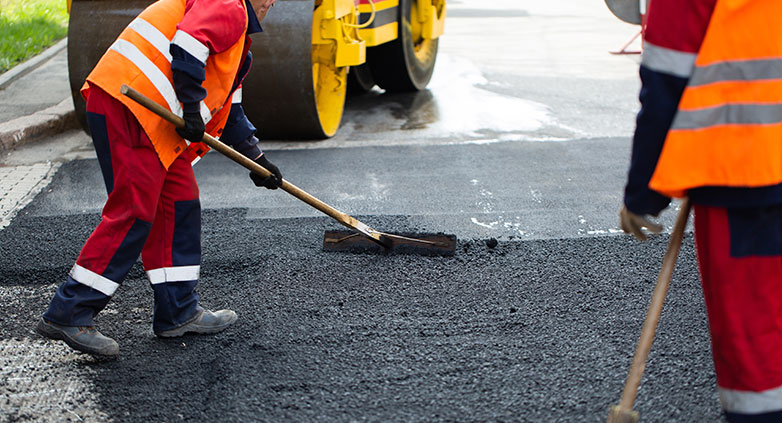Asphalt Resurfacing vs. Replacement – Which Is The Right Option For You
Understanding the differences between asphalt resurfacing and replacement is crucial when addressing driveway or parking lot damage.
Asphalt resurfacing involves replacing the top layer of the pavement, extending its life by 8-15 years, and is suitable for minor to moderate damage. Replacement, on the other hand, entails completely overhauling and replacing the asphalt, recommended when the pavement is in severe disrepair. The choice depends on the extent of damage, cost considerations, and long-term maintenance goals.
Dive deeper into the specifics of asphalt resurfacing versus replacement to make an informed decision for your pavement needs.
Asphalt resurfacing vs. replacement, which is better for you?
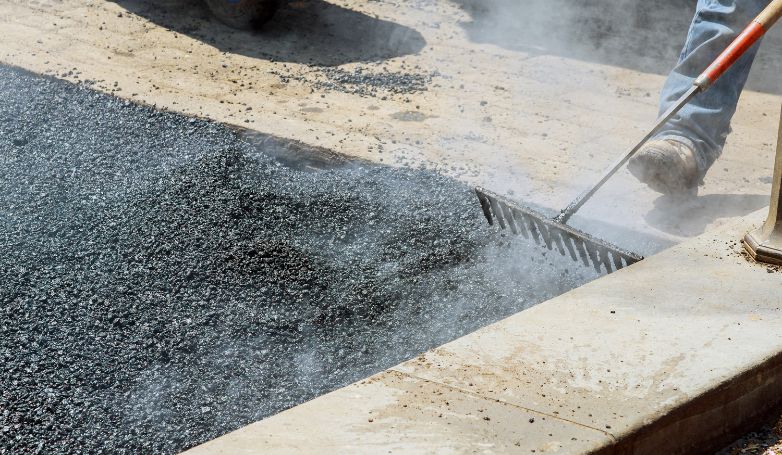
Resurfacing is a good practice for addressing your pavement issue, as it is easier, faster, and, in some ways, just as efficient as a replacement. Nevertheless, there are several instances where driveway or parking lot replacement is not only better, it’s vital. Your driveway would inevitably lose its structural quality after around 15 years. Hence, It would be much more effective to replace it completely if it is too old or has too much damage.
It is necessary to know that not all damage to your driveway or parking lot would need a complete replacement. You can save money and time by fixing or resurfacing it.
But should you replace the whole surface?
You have to find out if your pavement’s foundation is faulty to give a clear answer to this question. How old is the parking lot or driveway? If your pavement is 20 to 30 years old, then it is time for a complete replacement. Because very old driveway or parking lots almost certainly have deteriorated foundations that require being replaced entirely.
What is asphalt resurfacing?

Resurfacing offers a cost-effective solution to enhance the appearance of your asphalt driveway or parking lot. If you’re deciding between this option and a full replacement, consider that this method not only revitalizes your pavement but also helps in economizing, especially when the foundational structure of your driveway or parking lot remains solid.
This process is an urgent money-saving approach to use when the asphalt shows signs of deterioration. However, there are other things to do, including removing or patching a section and filling holes before you proceed to resurface the entire patch.
Before adding the overlay, you need to do some necessary preparation work; there is a need to fill any crack and hole, level any low or high points, and address any drainage feature that needs adjustment. After carrying out all these repairs, it is now time to lay your new asphalt layer, and your pavement will become as new. Resurfacing can offer your old pavement a new look, without the cost of replacing it altogether.
When should you resurface your asphalt?
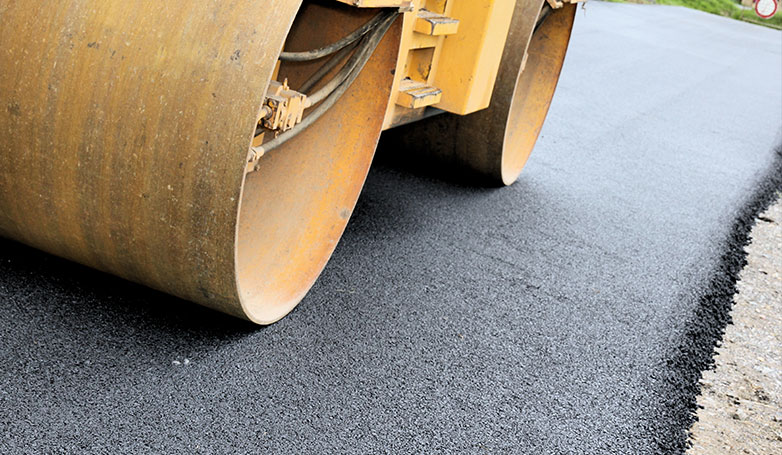
Ensuring that your pavement is well-maintained can help guarantee its quality and longevity. Some signs will help you determine between asphalt resurfacing and replacement when your driveway or parking lot calls for repairs. If a basic fix doesn’t do the trick, it might be appropriate to resurface your driveway.
The success of your pavement rejuvenation hinges on the repair approach adopted. Unaddressed holes and cracks in your driveway can reemerge post-treatment if not properly rectified. To assess the necessity of this process, observe the following signs:
- If your paved surface requiring repair is not up to 25-30%
- Your pavement is below 20 years of age
- The base of the pavement is sound structural
- If your paved surface does not have cracks that are above a quarter-inch wide.
- If your paved surface does not have cracks that are a few inches deep.
Asphalt resurfacing process
When your asphalt surface sustains extensive damage or becomes significantly aged, bypassing the debate between repair and total replacement, it becomes clear that a renewal is necessary. Renewing your asphalt pavement typically encompasses four distinct steps:
Step 1: Preparation
Before resurfacing can begin, the area must be thoroughly prepared. This involves removing all debris, including loose asphalt pieces, grass, and dirt, to ensure a clean and stable surface. Additionally, it’s important to assess for any drainage issues that need addressing before the resurfacing process starts.
Step 2: Asphalt Milling
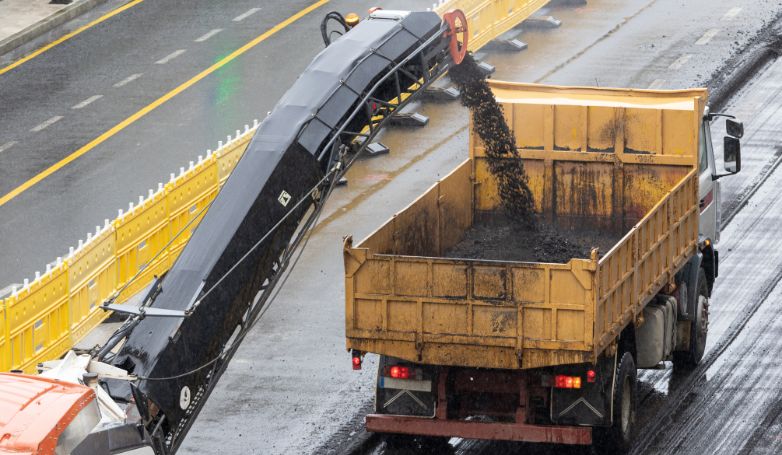
The next step is asphalt milling, where the top layer of existing asphalt is carefully removed. This process is crucial for creating a smooth surface for the new asphalt to adhere to. Specialized milling equipment is used to strip away the old layer without damaging the underlying structure.
Step 3: Pavement repair
Often, underlying pavement issues are revealed after milling. Any damage such as cracks, potholes, or uneven surfaces must be repaired at this stage. Contractors will typically use asphalt patching techniques to fix these areas, ensuring they are level with the surrounding surface. This step is vital for the longevity and effectiveness of the resurfacing.
Step 4: Asphalt Resurfacing
Finally, the new layer of asphalt is applied. This involves using paving machines to lay down the asphalt, followed by rollers to compact and smooth it out. This step requires precision to ensure the asphalt is evenly distributed, achieving a uniform thickness and a smooth finish that will ensure durability and an aesthetically pleasing appearance.
Cost of resurfacing asphalt
| Resurfacing Material | Cost per Square Foot | Notes |
|---|---|---|
| Asphalt | $3 – $7 | Cost-effective for minor to moderate damage. |
| Rubber | Higher than Asphalt | More expensive, used for specialized applications. |
| Pavers | Higher than Asphalt | Ideal for high-end aesthetics but costly. |
| Gravel | Lower than Asphalt | Economical, less durable than asphalt. |
| Tar-and-Chip | Lower than Asphalt | Affordable, offers a rustic look. |
Resurfacing an asphalt driveway proves more economical than the expense involved in laying a new one. The cost for this process typically ranges from $3 to $7 per square foot.
This approach stands as a more budget-friendly option compared to alternatives like rubber or pavers, though it does exceed the expenses associated with gravel or tar-and-chip methods. Keep in mind, overlaying one material with another can result in varying overall costs.
Alternatives to resurfacing
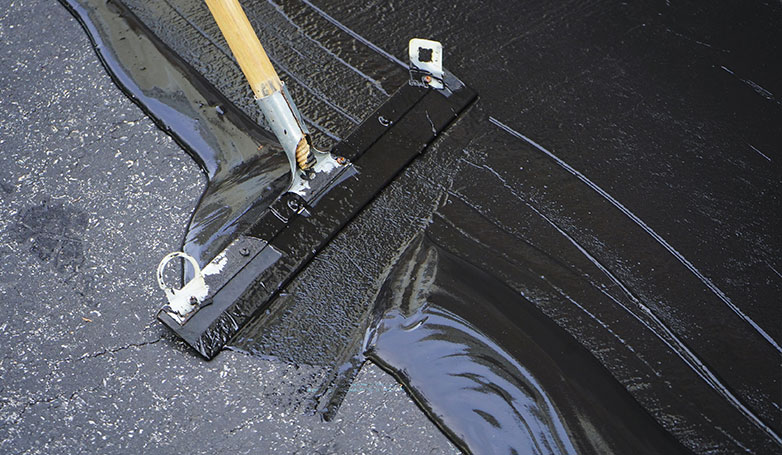
Asphalt maintenance offers more choices beyond just renewing or replacing the surface. When considering upkeep, options like seal coating and patching stand out as effective methods to maintain the quality of deteriorating asphalt, serving as excellent alternatives.
Sealcoating
Sealcoating means applying a protective coating (liquid mixture) to the asphalt surface to protect the asphalt from damage and weather.
Once the thin coating solidifies over the asphalt, it provides a deep dark finish, making it looks excellent and offering a durable protective layer to the pavement. Sealcoating protects the asphalt against corrosive chemicals, UV light, oil leaks, and moisture.
Read more: Asphalt Driveway Paint
Patching
Patching is the covering of potholes or unearthed areas in the asphalt pavement. This process also works well, especially if there is no much damage on your pavement and it is inexpensive to carry out. If you repair potholes or other damage in your pavement early, it prevents further degradation resulting in costly pavement repair.
The most cost-effective way to protect your asphalt pavement surface and the base is asphalt patching. You get an immediate boost in appearance and protection by filling potholes while shielding your pavement from more degradation and erosion.
Crack Filling
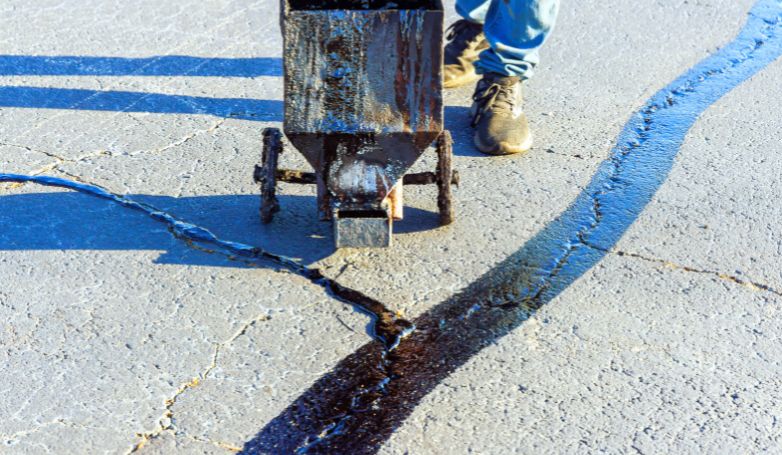
This involves treating the cracks in the asphalt surface before they develop into larger problems. Specialized fillers are used to seal these cracks, preventing water and other elements from penetrating and causing further deterioration. This method is particularly effective for maintaining the driveway’s integrity and prolonging its lifespan, especially when the damage is not extensive.
Overlay
This method involves laying a new layer of asphalt over the existing pavement. It’s a middle-ground solution between full resurfacing and patching, offering a fresh look and extended durability without the need for complete removal and replacement. An overlay is ideal when the existing surface is moderately worn but still structurally sound. This option provides a new driving surface and can address issues like minor ruts or depressions.
What is asphalt replacement?
Replacement is the complete breakdown and hauling away of the old asphalt pavement before laying down fresh asphalt. This method involves leveling and compacting the asphalt subgrade, ensuring it is still solid, preventing any sinking or settling. After that, a new layer of asphalt would be paved down, making for a new brand pavement. The new asphalt pavement would last for many years if it is given proper care and maintenance.
Asphalt resurfacing is often a viable option for your pavement, but replacement is required mostly in serious situations. Although it is more costly, it is also twice the life of your driveway or parking lot. It allows you to “start fresh” with a surface free of any surface-level faults or fundamental deficiencies.
When should you replace your asphalt?

There are indications to tell if your parking lots or asphalt driveway need replacement. Replacing your pavement may be the better alternative if you observe the below symptoms on it:
- The paved surface needing repairs is above 25 to 30%
- Your pavement surface is above 20 years old.
- Your pavement developed cracks that are a few inches deep
- Unstable foundation.
- Your pavement developed cracks that are more than a quarter-inch wide
Asphalt replacement process
Do you have an asphalt parking lot or driveway that requires replacement? It is recommended that you get in a professional paving contractor to guarantee a perfect result. The following steps are the way to get the job done:
Step 1: Demolition and removal
The process begins with the complete demolition of the existing asphalt layer. This task requires heavy machinery to break up and lift the old asphalt. Once demolished, the debris is carefully removed and hauled away, clearing the area for the new pavement.
Step 2: Excavation
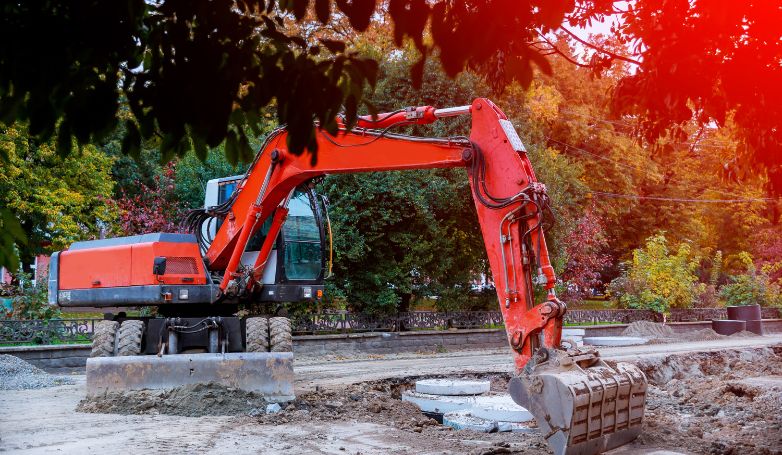
Next, the contractor excavates the site, paying special attention to grading. Proper grading ensures that the higher end of the driveway allows water to naturally flow towards the lower end, crucial for effective drainage and preventing water accumulation. This step is vital in protecting the driveway from early degradation and safeguarding the property from potential flooding.
Step 3: Apply Sub-Grade
In this phase, the sub-grade material is evenly distributed over the excavated area using rakes and shovels. The sub-grade is then moistened and thoroughly compacted. This creates a robust and stable foundation for the new asphalt, ensuring longevity and durability. This process is critical for both asphalt resurfacing and replacement.
Step 4: Binder and Surface Course
After preparing the sub-grade, the next critical phase is applying the binder layer. This layer acts as a bridge between the sub-grade and the new asphalt surface. The binder, a robust mixture of large aggregate and oil, is carefully spread to ensure uniform coverage. It provides a sturdy base that resists shifting and cracking, effectively enhancing the durability of the pavement. During this stage, attention is paid to any soft spots or areas that might need additional reinforcement to ensure a consistent and resilient foundation for the final layer.
Step 5: Install new asphalt surface

The installation of the new asphalt surface is a process that demands precision and expertise. High-quality asphalt is laid over the binder layer, creating the final driving surface. This layer is meticulously applied to achieve the correct thickness and smoothness, ensuring an even and stable surface. The asphalt is spread with precision, and attention to detail is crucial to avoid any irregularities that could affect the driveway’s performance and appearance. Once laid, the surface is smoothed out, eliminating any bumps or lumps, to provide a seamless and aesthetically pleasing finish. This top layer not only contributes to the visual appeal of the driveway but also to its overall functionality, offering a smooth and reliable surface for vehicles.
Step 6: Final roll
The final step involves the use of a roller truck to compress and smooth the newly laid asphalt, paying particular attention to the edges and joints. This ensures a uniformly compacted surface, enhancing the driveway’s structural integrity and aesthetic appeal.
Asphalt replacement cost
| Type of Asphalt | Thickness of Driveway/Parking Lot | Estimated Cost per Square Foot |
|---|---|---|
| Standard Asphalt | Thin Layer (1-2 inches) | $3 to $5 |
| Standard Asphalt | Thick Layer (3-4 inches) | $5 to $8 |
| Premium Asphalt (Higher-grade materials, enhanced durability) | Thin Layer (1-2 inches) | $5 to $7 |
| Premium Asphalt (Higher-grade materials, enhanced durability) | Thick Layer (3-4 inches) | $7 to $10 |
The cost to have your asphalt pavement surface replaced will rely on the type of asphalt you select and the thickness of the new driveway or parking lot you’re opting for. However, you will be spending $3 to $10 per square foot on average to have your asphalt pavement replaced.
Pros and Cons of Asphalt Resurfacing vs. Replacement
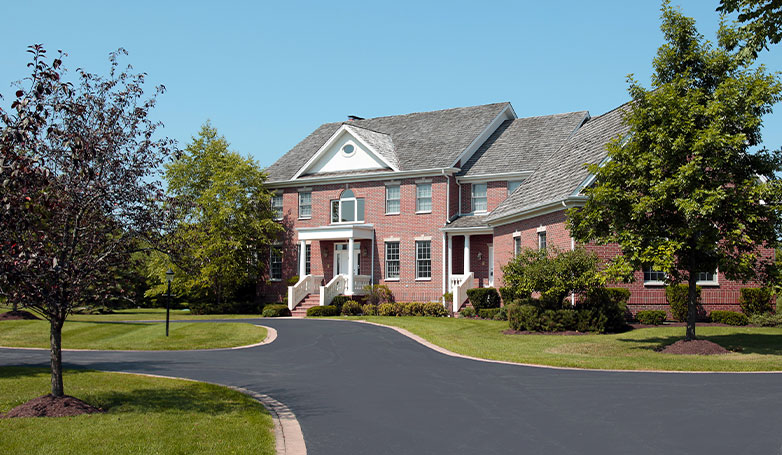
If you are contemplating between replacing and resurfacing your asphalt pavement, it is good that you know what is in both methods. By determining the pros and cons of asphalt resurfacing vs. replacement, you will be able to make an informed decision for your next project.
Pros:
- Resurfacing your asphalt pavement would save you some dollars as it requires a few materials and less time to complete compared to replacement.
- Resurfacing can be a DIY method as it is simple to perform, unlike replacement which involves rigorous processes
- Resurfacing takes less time to get done, unlike replacement which involves lots of processes, and consumes much time to complete.
Cons:
- Resurfacing is not effective when the pavement damage is severe, while replacement works well for little or extreme degradation of the pavement.
- A resurfaced pavement does not last as much as a replaced one.
- Resurfacing does not address pavement with structural problems, while a replacement is perfect for pavement with an unstable base.
- Resurfacing may conceal hidden serious problems in the pavement foundation. Simultaneously, a replacement can uncover any hidden issue with the base pavement as it involves total demolition and excavation of the pavement.
Tips for asphalt maintenance to increase the longevity of the surface
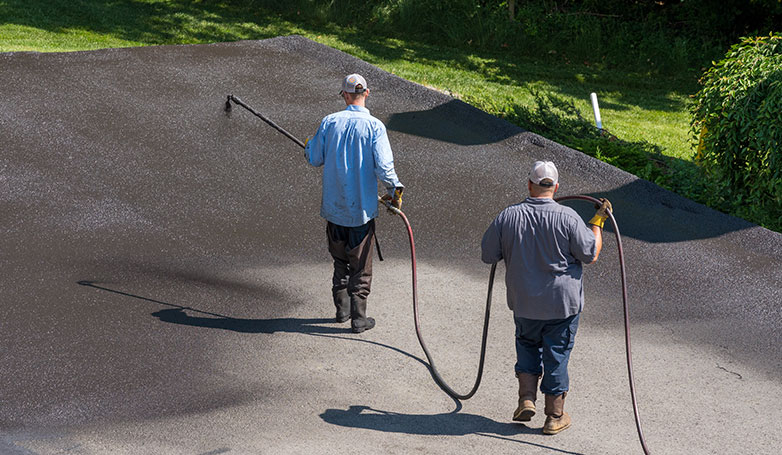
Well constructed and installed asphalt pavements can help maximize their useful service life if maintained properly. An effective asphalt care plan can significantly increase the useful life of your asphalt parking lot or driveway. In the long run, an effective preventive maintenance schedule would help save money, thus offering a surface that is appealing, flexible, and safe for years to come. Below are few tips for maintaining asphalt to increase the longevity of the surface. These tips are valid for both asphalt resurfacing and replacement;
- Control load: Try to limit the presence of heavy vehicles on your driveway or parking lot as they usually carry heavy loads that can destroy your pavement in no time.
- Regularly sweep and wash your pavement with a stiff brush to prevent debris from triggering damage to it. A clean pavement can also help you detect cracks and drainage problems easily to be fixed before they get severe.
- Ensure that you immediately fill any crack that may develop on your pavement to prevent a destructive element from penetrating the pavement base.
- Ensure no drainage issues are causing standing water on your pavement. This will prevent cracks and potholes from forming.
- Apply a fresh seal coat to your asphalt pavement to help prevent it from chemical spills, moisture, air, and UV rays.
- Call in a professional asphalt contractor to immediately fix any damage in your pavement that is big enough to be addressed by seal coating and filling.
How to save some dollars on asphalt resurfacing and replacement project
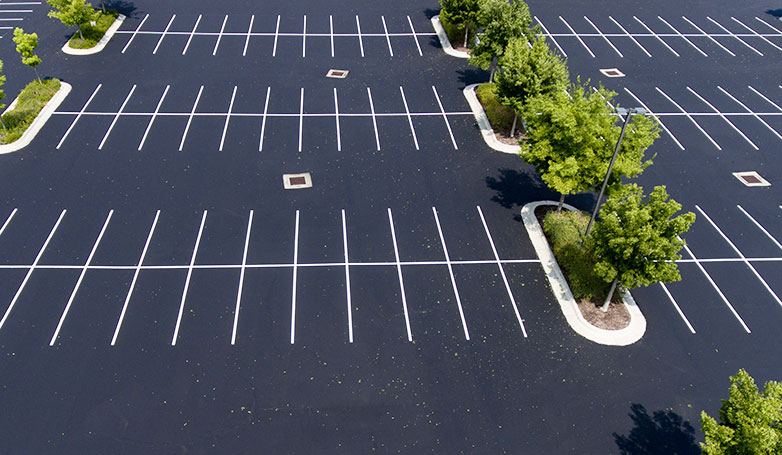
While asphalt is usually cheaper than concrete, you might be curious about how to save money on its construction, especially if you need to tear out your old driveway before installing a new one.
Asphalt is completely recyclable, and it is typically possible to extract and mix older pieces or portions of this material with new batches. So ask your contractor about using recycled material for your paving project. This not only prevents existing asphalt out of landfills but also can be less expensive than getting fresh asphalt.
Conclusion
It is vital to recognize all the warning signs in your pavement to make the right choice between asphalt resurfacing and replacement. If you perform replacement when you should have resurfaced, it’s going to cost you. If you resurface when you need to replace it, it’s still going to cost you. Understanding the required thing to be done isn’t trial and error. So, get in a professional opinion to examine your pavement and tell whether resurfacing or replacement is best for you.

